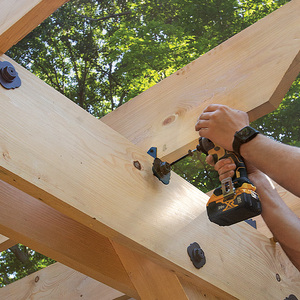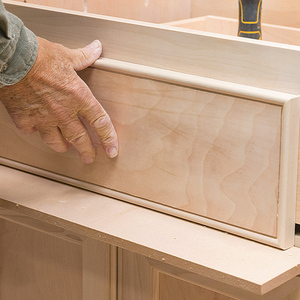Can someone explain why using a Markup Multiplier is more correct than just multipling by a percentage for figuring out an estimate.
ie: if job costs are $1,000 and you want a 20% gross profit they say to mult the $1,000 by 1.25 for a bid price of $1,250 vs multpling the $1,000 by 20% for $1,200.
Can someone explain this in English??
Thanks



















Replies
I'm guessing here but I know that sometimes when people calculate prices to charge bearing in mind the cost price, that they start with the selling price. i.e. $1000 is 20% OFF $1250. Could that have a bearing?
John
What I am trying to describe is what I have read many times in trade mags about how Contractors are losing money by multiplying their hard job costs by a simple percentage instead of using a Markup Multiplier.
Usually there is a list of the multiplier numbers to use in order to earn a certain percentage.
If you want to earn a 20% Gross profit, then multiply direct costs by 1.25
If you want to earn a 25% Gross profit, then multiply direct costs by 1.33
The formaula being 1 / (1- Gross Profit) = Markup Multiplier.
example: Gross profit: 33%
Multiplier: 1 / (1-.33) = 1.49
I am trying to get an understanding of why this is so.
GROSS PROFIT IS THE % AS IT RELATES TO THE SELLING PRICE:
SELL= $1,250.00:
COST= $1,000.OO:
GROSS PROFIT $ = $250.00 (20% OF 1,250)
MARK-UP IS THE % MULTIPLIED TO THE COST
COST = $1,000.00
20% M.U. = $1,200.00 (SELL PRICE)
GROSS PROFIT IN THS CASE IS $200.00 OF 16.6% !!!
HOPE THIS HELPS
Frank-
I was going to reply to your question at JLC, but I didn't want to step on Michael Stone's toes. Here's the deal:
If you want to net 20% on a job for overhead and profit, that leaves 80% of the sales price for direct work costs. If, in your case, direct work costs are $1,000, that's 80% of something (the sales price). To find that "something", you can divide $1000 by 0.8, to arrive at $1,250, or find the inverse of 0.8 ( 1 / 0.8 = 1.25) and multiply $1,000 by that 1.25 multiplier- same result- $1,250.
If you were to take 20% and add it to your $1,000 direct cost, you'd get $1,000 x 1.2 = $1,200- leaving yourself short.
The hard part isn't in doing the math, once you understand why it's done this way- it's determining what that multiplier has to be, based on your overhead costs and desired profit. The one thing that scares me is the "20%" figure you used in your example- if you're trying to work on a 20% margin (1.25 multiplier), you're probably not covering your overhead and profit adequately. Ideally, you should be netting 8-10% profit, which leaves you only 10-12% for overhead. Unless you run a very lean operation, you'll be bankrupt rather shortly.
Like Michael, I've found that most contractors with vehicles, insurance, accounting, and OWNER SALARY (don't forget that one) end up using a multipler of at least 1.5 to 1.7, and some are even higher.
Hope that helped,
Bob
It is not the mark up of 20% it is the mark down of 20% is why they tell you should use the 1. 25 to mark things up if you want 20% margin. It is when you decide that you need that job and you will do it for your cost. IF your profit is 20% . So you don't lose in your example $40.00 and sell the job at that loss.
now if reallize the if you have a 20% mark up and you want to discount it 20% if you were to divied by 1.20 in stade of .20 you would get back to your starting point. lets use your example of $1000.00
1000x.20 = 200 so you add 1000 +20 = 1200
1000x1.20 = 1200
discount of 20%
1200 X .20 = 240 so subtract 240 - 1200 =960
1200 ÷ 1.20 = 1000
Now if you use the X of 25% to figgure the markup when you discount 20% you don't go in the hole. You will if you discount at 25% you will.
Stupid question- if you're going to do a job at cost, and not turn a profit, why bother doing the job?
I'd rather play golf if I had no money-making work to do, rather than work hard all day, with all the risk that's inherent in this business.
Bob
To answer that question depends on a few things if you are a man band or if you have crew. If you need the crew for the next job you have.
If you need to lay good crew off for 3 weeks will they be there to be hired again or will you need to find new qualified people to work for you?
This crew are part of the reason you have the rep of being a good GC. You can trust them to get the job done.
Weather or not they want to take a brake or not will also will make a difference as to take a job for cost or not.
Depends on your fixed over head and how close to paying it off for the year.
Do you want to eat your over head and take it out of you reserves to cover it or not?
Do you want to have to jack up the price on the change orders on next contract to cover the over head. You did not cover on the 3 weeks were not working?
Do you want your over head to go up next quarter? When the state want more for unemployment insurance because you lay three people off for 3 weeks.
How big are your reserves? More important if you want to spend them when you don’t have to?
Can you afford to pay your self out of your reserves for three weeks while you wait to start the next big contract? Do you want try not to dip into that unless it is necessary to do so?
Now if the job for cost, covers your over head, pays your wages covers. The wages of all of your crew plus some over time. A small cushion for mistakes. If the job is just fill job between the last contract and the next one. The only thing you are giving up is 50% for the company. Considering you will get one more reference. May get a few more referrals. Not sure how good the reference or referrals will be.
Very interesting. Thanks for the thoughts.
SamT
I think it's been explained well, but in simple terms:
If you want to make 20% profit, that means you want 20% OF THE SELLING PRICE to be your profit. That means your cost should be the other 80%. So, you take your cost, and DIVIDE by 0.80.
If you use the 1.20 multiplier, that means you want your profit to be 20 percent of THE COST. Obviously, you want your 20 percent to be on the bigger number, that is, the selling price. That's the way it is always taken.
Frank, if you're a tradesman, it doesn't matter which number you use. If you're not making enough money, raise the number. For what it is worth, the experts in this industry say that you should charge 1.5 to 1.7 times what you estimate each job will cost you in time and material, your time at a good wage, $25-$50/hour before taxes.
That includes all subs and materials costs to you when you times 1.5-1.7
If you are a businessman, then you know your fixed expenses and you have a good grasp of what the % of each jobs cost will be OH, and you have made a pretty good estimate of what your billable hours will be and you know what you want for a profit at the end of the year.
AND. . . You don't need us to explain all this.
SamT